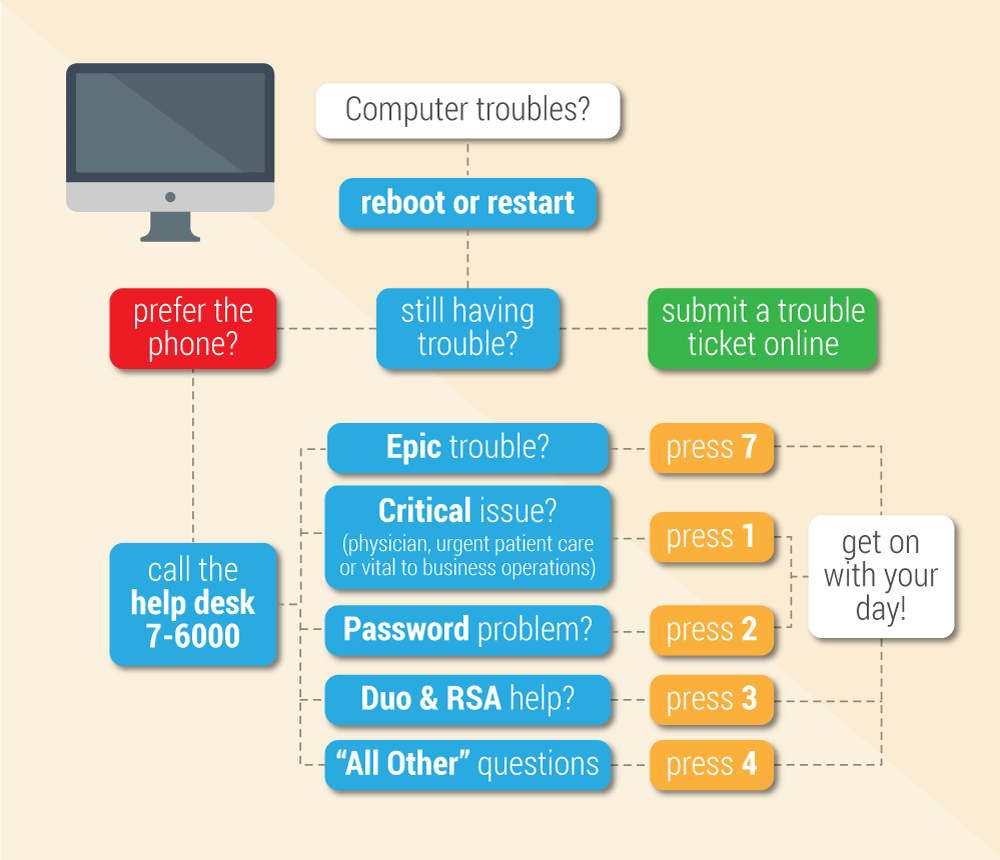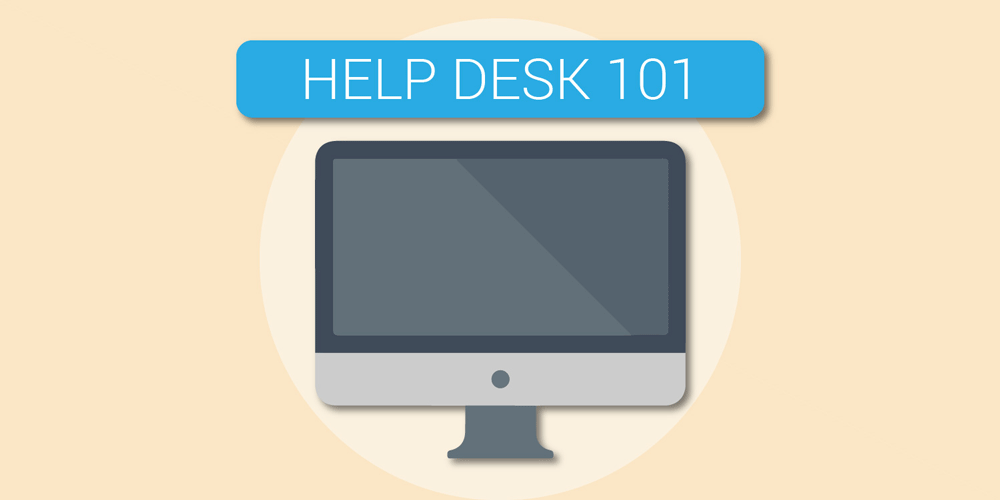12 people troubleshoot for 12,000 users
On weekdays from 7:30 a.m. to 6:00 p.m., you’ll probably talk to one of the 10-12 service agents about your particular computer problem. If you’re calling on the weekend or at night, there’s only one individual addressing all reported issues. Service agents are there to help fix your current problem and work with you to prevent it from happening again.
Before you call, try one of these tips to troubleshoot for yourself:

#1: Reboot or Restart
Often the first thing you’ll be prompted to do if you're experiencing computer trouble. Rebooting and/or restarting your computer fixes more things than you might think. Why? We don’t always know, but it definitely works.
To Reboot (hardware approach): Press and hold down the power button for 5-10 seconds to turn the computer off. Once the computer is off, wait a few seconds and then push the power button again to turn it back on.
To Restart (software approach): Shut down all programs and “Turn off” or “Restart” your computer.
No change? Probably time to call the service desk.
#2: Keep it safe
The more critical the information is to the organization, the more important it is to save it to the right spot.
Here are a few do’s and don’ts to help keep you and the organization safe:
| Don't do this | Do this |
|---|---|
| DON’T use your email for storage. | DO save important files in the nework drives. |
| DON’T save important things to your desktop or local drive (C: Drive). | DO use UBox. It’s great for sharing large files and can be restricted to internal employees. |
| DON’T share sensitive information in emails (if you must, don’t forget the PHI in your subject header). | DO use Pulse for sharing local team-based information (schedules, procedures, unit based information). |
#3: When you do call, choose the right option for you
When it’s time to make the call, it helps to understand calls are initially triaged by callers:
- The team averages 230 calls per day. Of those, 10% of callers abandon the call before service can be provided.
- Critical issues (Physicians, patient care or vital business operations) are expedited!
- Password resets usually take about 3-minutes to fix.
- Two Factor Authentication (RSA/Duo) can take a little longer to troubleshoot or configure.
- Next Available Agent supports over 400 applications and averages a 10 minute wait.
#4: Use the online ticket system
Report issues when you see them using the online ticket system. Online tickets keep things moving and prevents others from encountering the same issue.
Originally posted June 2017
Mike Madsen
Your gut tells you a process could be better than it is—how do you back that feeling up with hard data? Senior value engineer Luca Boi shows how undertaking a baseline analysis can jumpstart your improvement project.
Why do some organizations thrive during a crisis while others flounder? Iona Thraen, director of patient safety, joined forces with her ARUP Laboratory colleagues to learn how the world-renowned national reference lab adapted to the pandemic. Leaders created a culture of safety by putting innovation, learning, and patient-centered care at the heart of all their efforts.
Chronic conditions do not pause during a pandemic. When faced with delaying the care of over 1,000 patients with neurological conditions, Susan Baggaley, Neurology Vice Chair and Ambulatory Chief Value Officer, and Vivek Reddy, Neurology Vice Chair and Inpatient Chief Value Officer, rapidly developed a new virtual visit workflow.
